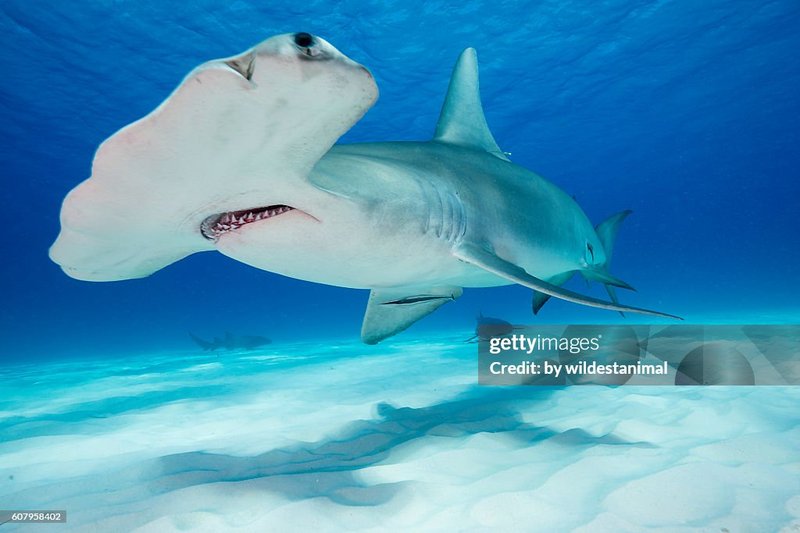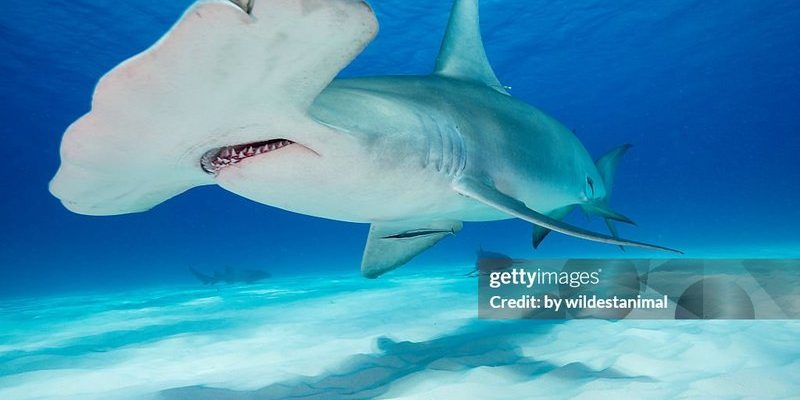
Diving into the underwater world of hammerhead sharks is like opening a treasure chest of survival skills. These adaptations not only help them hunt and avoid predators but also navigate their surroundings. So, grab a cup of coffee, and let’s explore how this remarkable creature has adapted to become a master of the ocean.
The Unique Hammer Shape
One of the first things that catches your eye about hammerhead sharks is their distinctive head shape. You might be wondering why it looks so unusual. This unique hammer shape isn’t just for show; it’s a crucial adaptation that enhances their sensory perception. With their eyes positioned at the end of the “hammer,” they have a wider field of vision compared to other sharks. It’s like having a panoramic view of the ocean!
This wider field comes in handy when hunting for prey. The shape also helps them detect electrical signals emitted by potential meals, like stingrays or other fish. Think of it as a built-in radar system, allowing them to sense movements and locate food even when it’s hidden in the sand. So, that funny-looking head is more like a high-tech tool that helps hammerheads excel as hunters.
Spotting Prey with Precision
To understand how the hammer shape works in their favor, let’s think about a scene underwater. Imagine a hammerhead cruising near the ocean floor, scanning for dinner. Thanks to their unique head, they can spot prey hiding in the sand more effectively than many other sharks. Their specialized nasal structures also help them detect smells in the water, giving them an edge when chasing after a meal.
This keen sense of smell, combined with their advanced vision, makes them formidable predators. It’s like having a superpower where you can see and smell everything around you, even when it’s hiding. This is why hammerheads thrive in diverse marine environments.
Social Behavior and Schooling
Another interesting adaptation of hammerhead sharks is their social behavior. Unlike many shark species that prefer solitude, hammerheads are known for their tendency to form schools. These groups can consist of dozens or even hundreds of individuals. You might think, “Why would a shark want to hang out with others?” Well, schooling offers several advantages.
First, being in a group can provide protection from larger predators. There’s safety in numbers, after all! Secondly, schooling can enhance hunting efficiency. When hammerheads hunt in a group, they can coordinate their movements, making it easier to catch swift prey. It’s pretty clever, don’t you think?
Communication and Coordination
You could say that hammerheads have their own version of teamwork. They communicate through body language and posturing, signaling to one another during hunts. Think of it like a synchronized dance, where each shark knows its role. This level of coordination not only helps them find food but also strengthens their social bonds.
A well-coordinated school can outmaneuver individual predators, making them more successful hunters. At the same time, this social behavior contributes to the overall health of the species, ensuring that younger sharks learn vital survival skills from older members of the school.
Adaptation to Diverse Environments
Hammerheads are found in various ocean habitats, from coastal waters to the open sea. This adaptability is another reason for their success. They can thrive in warm waters but are also found in cooler areas, which broadens their range. You might wonder how they manage such versatility.
One key factor is their ability to adjust to different salinities. Hammerhead sharks can tolerate both salt and brackish water. This flexibility allows them to explore estuaries and shallow bays, giving them access to abundant food sources that many other sharks can’t reach. It’s like having a favorite restaurant that’s open in every neighborhood!
Behavioral Adaptations
In addition to physical adaptability, hammerheads exhibit various behaviors that help them thrive. For instance, during the day, they prefer deeper waters where the sunlight isn’t as strong, reducing their visibility to potential threats. At night, they move closer to the surface to hunt, showcasing their ability to navigate and exploit their environment.
What’s fascinating is that hammerheads have also been observed using the ocean’s currents to their advantage. By positioning themselves in the right spot, they can save energy while searching for food. This strategic approach to their surroundings illustrates just how smart these sharks really are.
Efficient Hunting Techniques
When it comes to their hunting style, hammerhead sharks have developed some unique techniques. They often use a method called “head-bumping,” where they strike their prey with their hammer-shaped heads. This technique stuns or disorients the fish, making it easier to catch. It’s like a professional athlete using their skills to outmaneuver an opponent.
Hammerheads often target flat-bodied prey like rays, which are common in their environment. Their head shape allows them to get close to the ground and find these elusive meals. In fact, research has shown that hammerheads are especially skilled at hunting stingrays!
Collaborative Hunting Strategies
What’s even cooler is that they sometimes hunt together, using coordinated tactics to trap and catch their meals. Picture a group of friends at a restaurant, each taking on a different role to make sure everyone gets their favorite dish. That’s how hammerheads operate in the wild.
This collaborative effort not only allows them to be more efficient hunters but also showcases their intelligence. They can learn from each other and adapt their strategies based on what works best. It’s a fantastic example of how social behavior can enhance survival skills.
Hammerhead sharks are remarkable creatures with a range of adaptations that help them thrive underwater. From their unique head shape to their social behaviors and hunting techniques, every aspect plays a part in their survival. Unfortunately, like many sharks, they face threats from overfishing and habitat loss.
It’s crucial for us to understand and protect these incredible animals. By appreciating their adaptations, we can better advocate for conservation efforts that ensure hammerhead sharks continue to roam our oceans for generations to come. So, next time you hear about these fascinating creatures, remember the unique adaptations that enable them to thrive in their underwater world.

